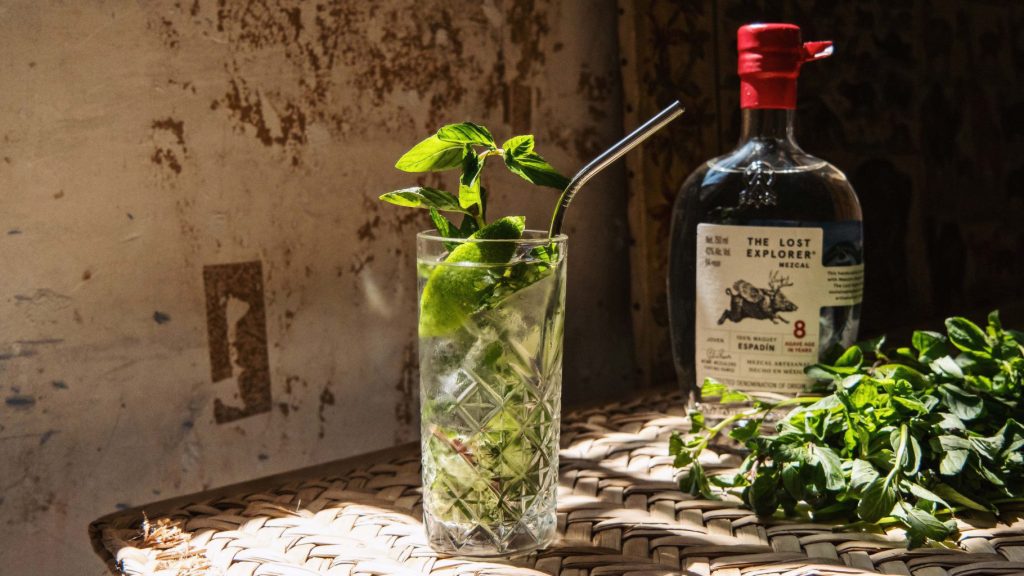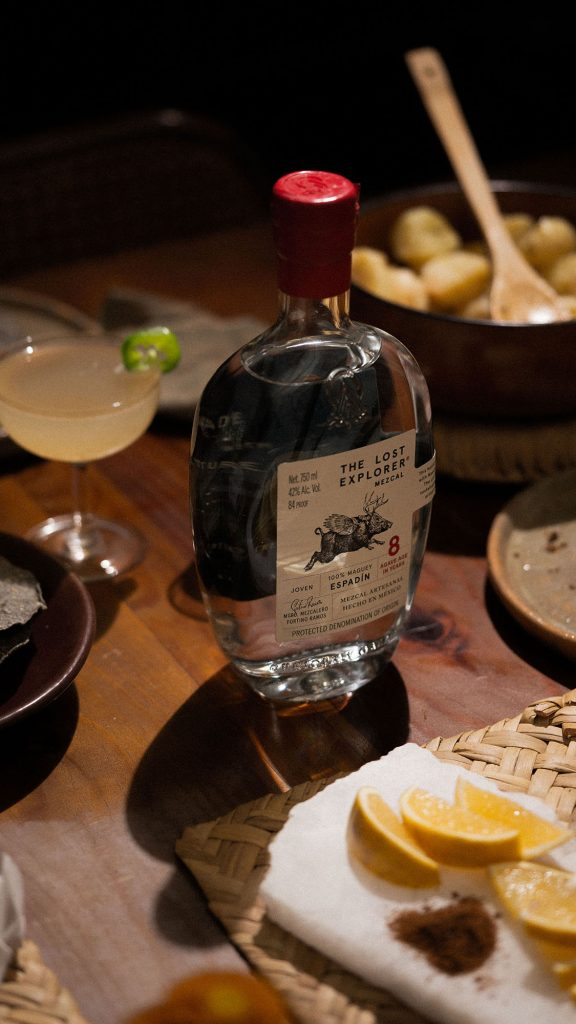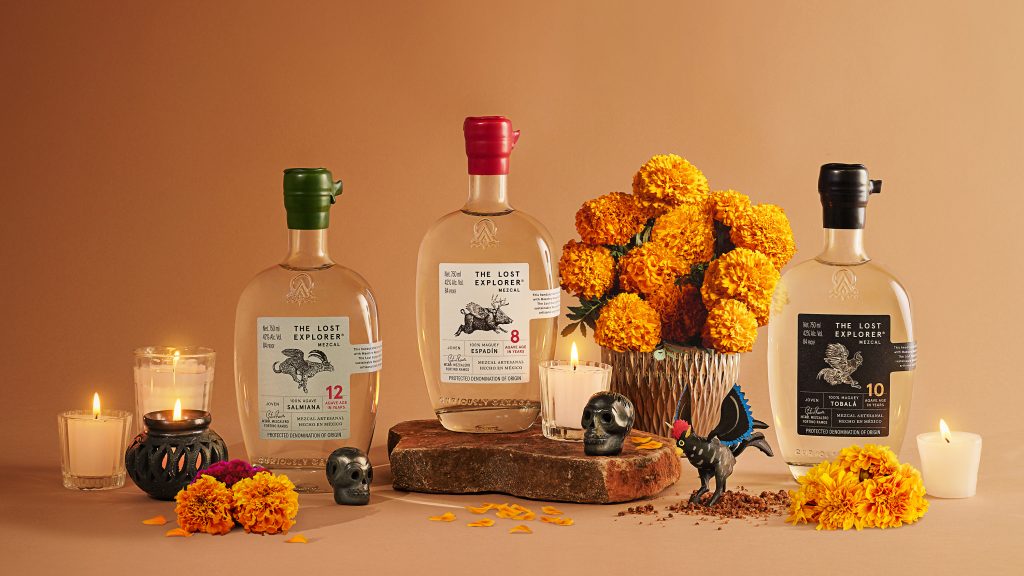Since launching in late 2020, The Lost Explorer Mezcal has grown to be one of the world’s top rated agave spirits brands. All three of its releases picked up top honors at the San Francisco World Spirits Competition, the International Wine & Spirits Competition, and the Tequila & Mezcal Masters, quickly making the trio “must tastes” for agave spirits aficionados across the globe. So, naturally, we wondered how does one go about creating one of the world’s top rated mezcals?
Co-founded by David de Rothschild and Thor Björgólfsson in collaboration with mezcalero Don Fortino Ramos, the trio of Lost Explorer Mezcals are distilled in San Pablo Huixtepec, Oaxaca by Ramos and his daughter Xitlali.
In this week’s Bottle Breakdown, we sat down with The Lost Explorer Mezcal’s Global Brand Ambassador Joseph Mortera to take a look at the brand’s Espadin and learn how Don Ramos creates one of the world’s top mezcal. As Mortera explained, Espadin is the style of mezcal every producer releases. It is the agave with most sugars and balances sweet with herbal, making it a great starting point for those looking to understand the basic profile of mezcal. For us, it seemed like the perfect place to start…

Spirited Zine: Just to start, can you tell us a bit about your first experience with Mezcal and how that experience shaped the way you approached The Lost Explorer Espadin?
Joseph Mortera: Well, when I started bartending, mezcal wasn’t a big deal, and there were only a few brands on the market. The good mezcal was only for the small villages in Oaxaca. When you work behind the bar, you will always be curious to know more about the spirits, so one thing led to another and I started visiting Oaxaca and many palenques before I realized I was really getting into mezcal and agave spirits.
Working for the gin category, but always in love with agave spirits, I started to understand the value of a good balance in the spirits and when I first tried our Salmiana, it was like gin with agave base, very herbaceous, bitter and sweet, spicy.

SZ: Espadín is the most commonly sourced agave varietal for mezcal. What makes Espadin such an optimal way for beginning one’s journey into mezcal?
JM: Espadin (Agave Angustifolia) is the agave with the most sugars and the agave is more premature. Also, the yield is by far bigger than any other agave.
Flavour wise, it is a good balance between sweet and herbal, making it a good way to start the journey into the agave world.
Mainly, however, it’s because every brand has Espadin in their portfolio.
SZ: Where does The Lost Explorer get its Espadin? Is it farm grown or wild harvested?
JM: Our Espadin is 100% cultivated (farm grown) from the Central Valleys in Oaxaca.
SZ: Can you take us through the distillation process and tell us a bit about mezcalero Don Fortino Ramos’ approach to making mezcal?
JM: The Lost Explorer Mezcal is produced with an approach that honours the traditional artisanal methods practised for millenia, while engaging in more sustainable practices that ensure we are returning to nature what we receive from nature.
Before being harvested, each agave plant species grows for an average of between 8 to 12 years, before reaching their ripest maturity. The rigorous and precise process of harvesting the agave is entrusted to our few and fearless Jimadores (specialist agave farmers). Each agave is hand-harvested one-by-one by the Jimadores, who help determine the precise moment of ripeness. Our Maestro Mezcalero Don Fortino determines the final selection of the agave, as it is the agave itself that has the greatest influence on the taste profile of each mezcal.
The leaves and roots are cut away, using a machete, leaving the piña (the heart of the agave) exposed. Once they arrive at the palenque (distillery), the piña are weighed and individually chopped by axe into two or four, depending on their size, to ensure even cooking. Dug in the ground, conical earthen ovens (known as a Horno) are lined with volcanic rocks, reclaimed local wood, soil and river stones. The piñas are returned to the earth, covered with tarp and soil from the land and cooked slowly for approximately 3 days. The cover is then removed and the perfectly roasted agave are left to rest and cool down for 2 – 3 days.
Smoked and now with all fibres thoroughly exposed, the agave are transported into open-top oak wooden barrels, where they are set to rest in pure spring water, as the wild yeasts find harmony with the elements. Fermentation occurs naturally, and these wild yeasts are unique to The Lost Explorer Mezcal palenque, another key factor in determining the character and taste of each mezcal varietal.
At the end of the fermentation process, the liquid and agave fibres are placed into copper alembic stills, where they are double-distilled in small batches, to achieve the purest and smoothest expression of the agave. According to NOM legislation, mezcal must be between 36% and 55% alcohol by volume (ABV). A key skill of the Maestro Mezcalero is knowing when and where to make the cut. Don Fortino’s preferred bottling strength is 42% ABV, as he believes this offers the perfect balance of raw ingredients and alcohol. This is very much a signature style of The Lost Explorer Mezcal, producing a smooth, well-balanced and elegant flavour, that allows the full complexity of the agave to shine through
SZ: Typically, an Espadín agave will take 5-8 years to reach maturity. The Lost Explorer’s Espadin is harvested at the top of that age range. How does waiting 8 years instead of 5 impact the flavors of the end product?
JM: By giving the agave more time on the ground, on its terroir, it is going to develop more sugars, in other words, more tools for the Maestro Mezcalero to develop fruit flavours during the fermentation part of the process. The Process in which our Maestro Mezcalero is truly a genius.
SZ: What kind of flavors and aromas should we be looking for when we first smell and sip this Espadin?
JM: In every Mezcal (100% agave) the first note has to come from the cooked agave, a good balance between herbal & sweet, in our Espadin, our Maestro Mezcalero managed to develop aromas of ripe fruits, red apple and fresh herbs.
SZ: How do you like to enjoy the Espadin? Are there any cocktails you’d recommend making with the mezcal?
JM: Firstly, I like to drink it neat, but our espadin is very versatile to mix in cocktails. I do enjoy a good twist on the classic margarita but instead of tequila I use of course TLEM Espadin or a paloma or simple with ice and soda with a slice of red apple.
SZ: Are there any foods that pair particularly well with The Lost Explorer’s Espadin?
JM: I love to pair it with seafood or a good mexican mole.
To get a bottle for yourself, head over to The Lost Explorer’s official webstore.



